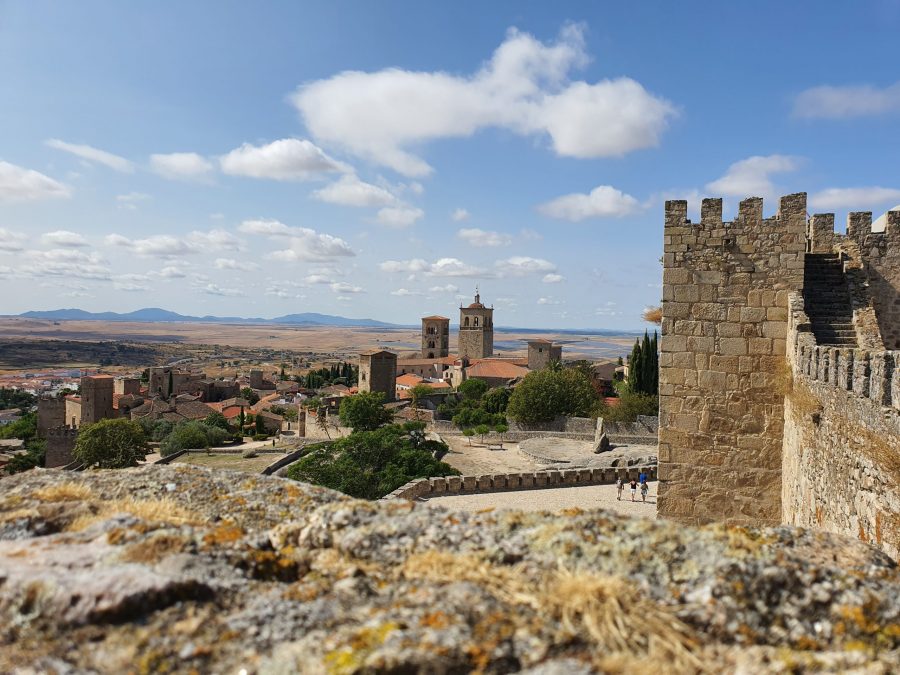InSpain.news takes you on a trip into Extremadura, a region bordering Portugal which is like journeying into old Spain. A series of articles will look at five of Extremadura’s towns and cities. We begin with an overview of this enchanting region.
Extremadura is a Spanish secret which borders Portugal to the west. It is a seductive region with some of the country’s finest Roman ruins, beautifully preserved medieval cities and villages where time has etched herself into the stone.
Mérida, Cáceres, Trujillo and Badajoz are historical settlements that will transport you back in time. Small but perfectly formed Zafra sits on the border with Andalucia and has been named ‘Little Seville’, though the reasons why are unclear.
European and World Heritage
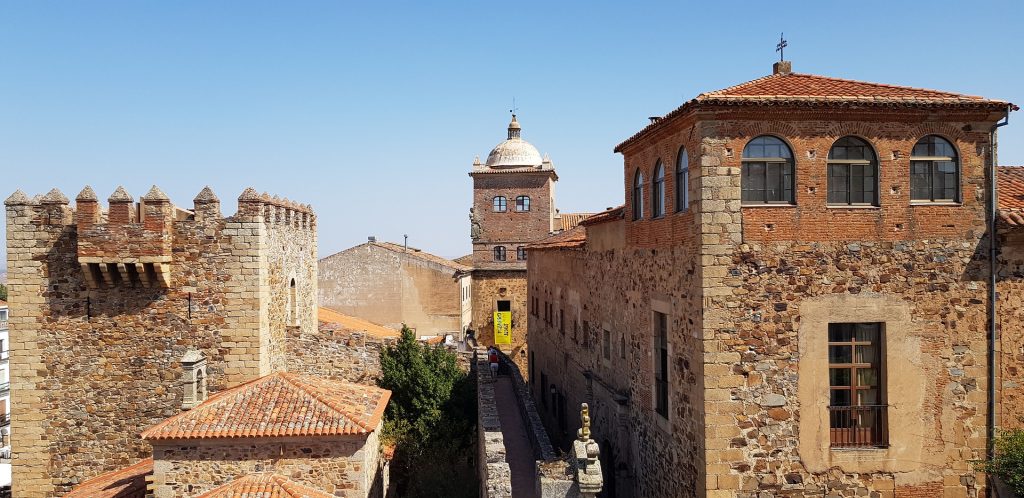
Cáceres old town
Extremadura hosts three UNESCO World Heritage Sites: The Royal Monastery of Santa Maria de Guadalupe; the Archaeological Ensemble of Mérida; and the Old Town of Cáceres. Each will transport you to a different time, whether it’s strolling the honey-coloured walls of Cáceres mediaeval town or watching a performance in Mérida’s Roman amphitheatre.
History buffs will be in raptures in Extremadura, there is an abundance of sites – many still being excavated – that tell of Spain’s past. While colonial history is tinged with regretful incidences, stumbling across towns such as Trujillo where many explorers called home is like unearthing a time machine.
Cultural Routes and Festivals
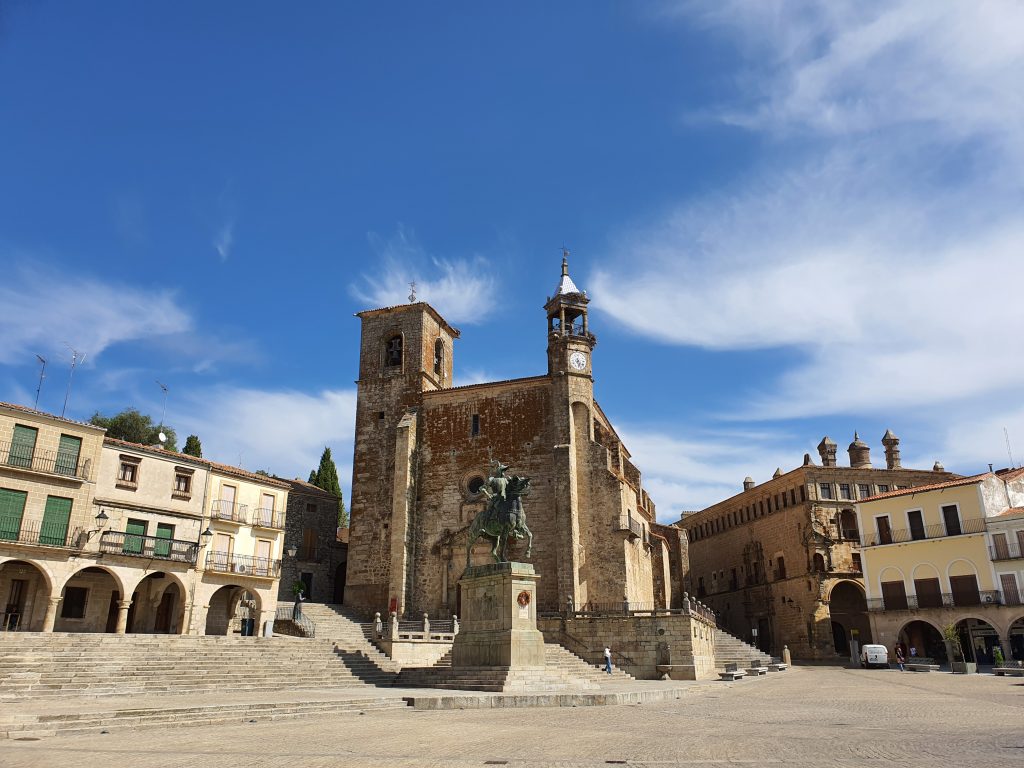
Trujillo main square
To follow in the footsteps of explorers such as Francisco Pizarro and Hernán Cortés, visitors to Extremadura can take the Route of the Explorers.
There are several other cultural routes that lead you along key historical paths, including:
Moreover, for entertainment, from classical theatre to contemporary music, Extremadura hosts some great festivals in incredible settings.
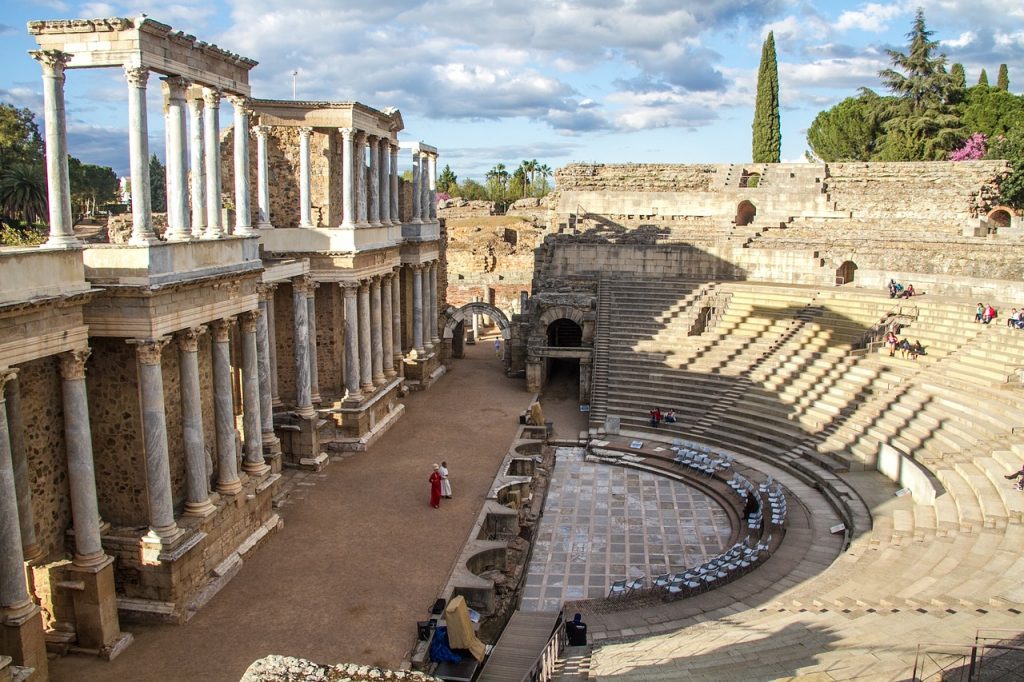
Mérida Roman amphitheatre
The International Festival of Classical Theatre, July-August, takes place in the Mérida amphitheatre. It is supported by the Cáceres Classical Theatre Festival in June and the Classical Theatre Festival of Alcántara in August.
Cáceres is also the setting for WOMAD, when world music sets the medieval centre of the town swaying. Luna Castle in Albuquerque hosts Contemporánea, while Las Palomos festival in May puts Badajoz centre-stage for LGBTI rights.
Gastronomy
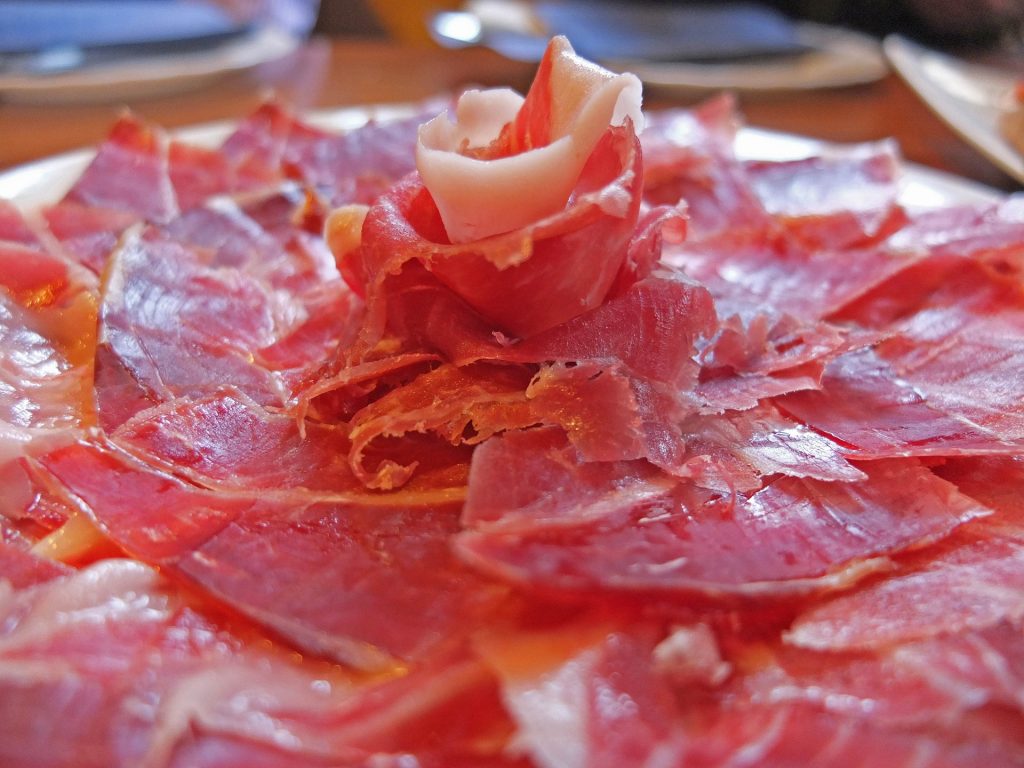
Jamón Ibérico
No visit to Extremadura is complete without sampling the incredible gastronomy of the region. The wine of Extremadura is delightful and not given the recognition it deserves. Furthermore, the jamón ibérico de bellota is unlike any other ham in Spain. Seated in the centre of Cáceres with a plate of this divine food is paradisical.
The landscape and climate combine to create the region’s incomparable gastronomy. Take a trip along the Ruta del Queso (cheese route) and you’ll discover a land of artisan cheesemaking, with sublime cheeses to tantalise the tastebuds. Add to the list superb olive oil, honey, cherries, and pastries, and you have a daily feast.
Natural landscape
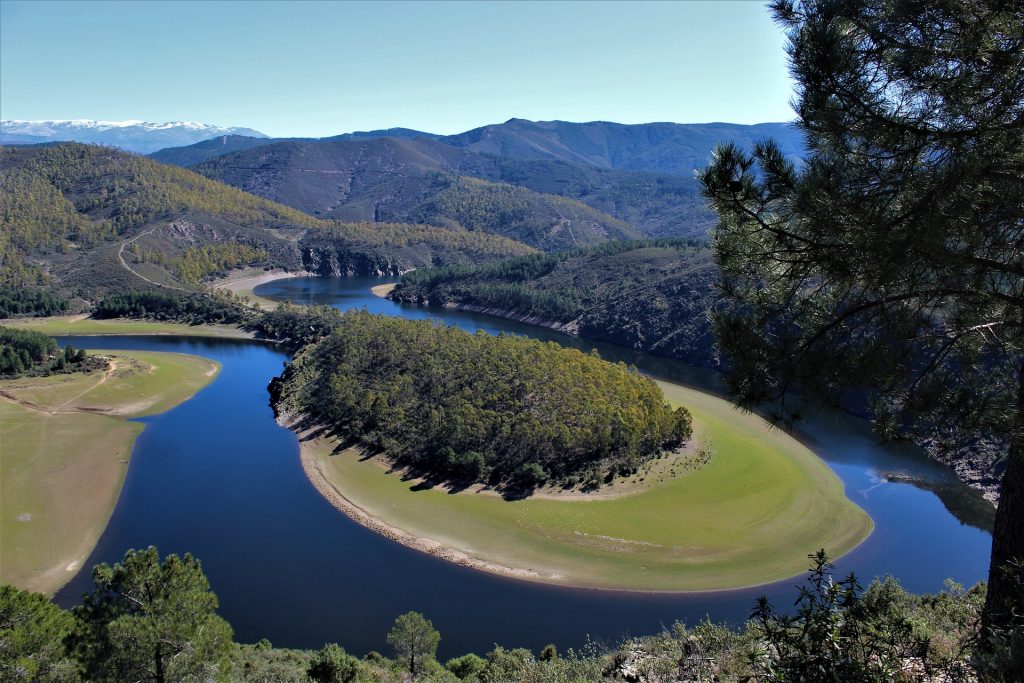
Extremadura’s natural landscape
One of Spain’s 16 National Parks sits in Extremdaura and is a place of beauty. Monfragüe NP is one of the largest examples of Mediterranean forest. Because it is located within the Biosphere of the same name, it is a great spot for bird watchers. The world’s largest black vulture colony lives here alongside black storks, griffon vultures and Egyptian vultures. They breed and feed themselves in and along the Tagus River, which passes through the park with its variety of mountain and meadowlands.
Furthermore, Extremadura has two other UNESCO Biosphere Reserves – Tajo International NP and Sibería Extremeña; plus, the UNESCO World Geopark Villuercas-Ibores-Jara.
These and other natural areas in Extramdura consist of not too densely vegetated forests of holm oaks, cork oaks and other species. Those areas are called dehesas. They cover almost a million hectares and the trees there help shape the region’s gastronomy.
For lovers of natural swimming, the region’s natural pools and gorges, and blue flag beaches are everything you could want. Choose from over 50 natural bathing areas and 1,500km of coastline.
Moreover, all this open, natural – and sparsely populated – landscape makes the region an excellent spot for stargazing. Lack of light pollution, good weather and good access, provides keen astronomers and simple stargazers the chance to study the wonders of the night sky.
Next week, InSpain.news takes you to Cáceres, for an insight into the medieval town.
